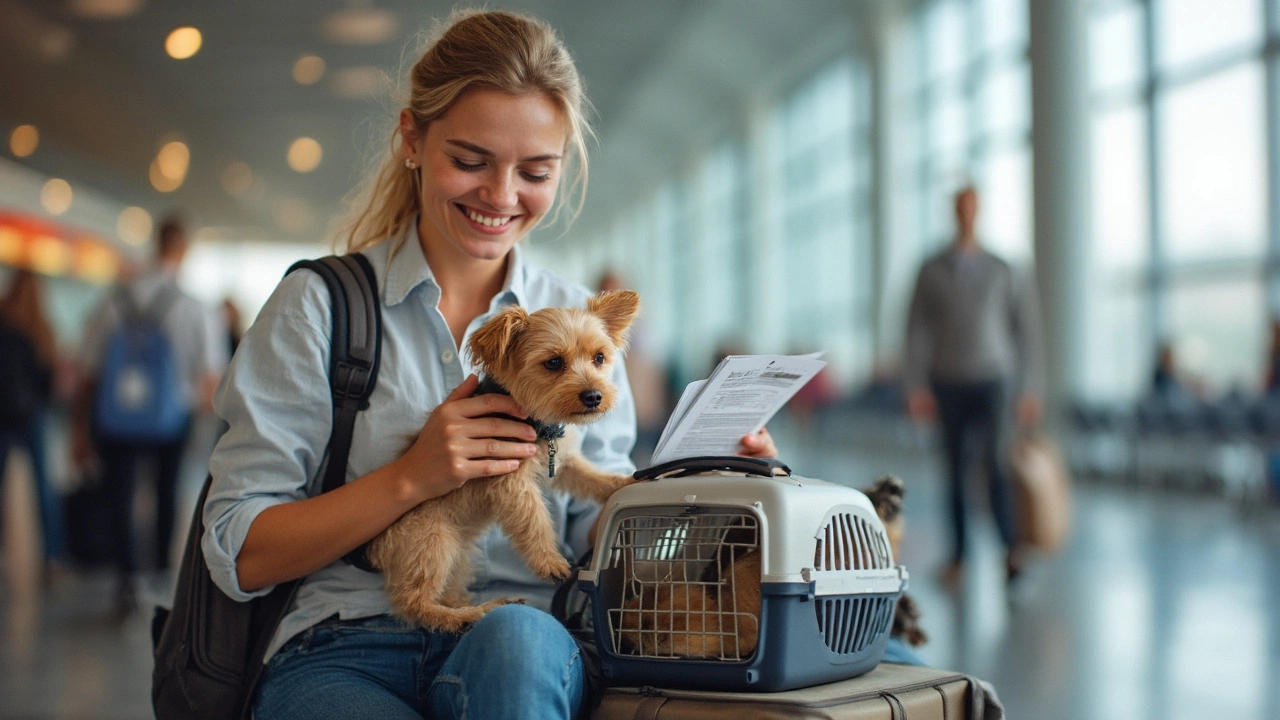TSA Pet Guidelines: What Every Pet Owner Must Know Before Flying
You're packing a bag, grabbing your passport, and suddenly wonder: can my furry friend come on the plane? The answer is yes, but only if you follow the TSA pet guidelines. In this guide we break down the rules, paperwork and handy tricks so you won’t get stuck at the gate.
Carrier Rules and Size Limits
The first thing TSA checks is your pet’s carrier. It must be clear, sturdy and fit under the seat in front of you. Most airlines cap the dimensions at about 18" x 14" x 10" (45 cm × 35 cm × 25 cm). If you’re using a soft‑sided carrier, make sure it can be compressed enough to slide under the seat without crushing your pet.
Label the carrier with your name, phone number and destination. A quick ID tag helps security staff handle the carrier safely and speeds up the process.
Documentation and Health Requirements
Before you even get to the airport, check the airline’s pet policy. Some carriers demand a health certificate issued within 10 days of travel, especially for international flights. For domestic U.S. trips, a recent vaccination record is often enough.
If you’re traveling with a service animal, bring your ADA documentation. TSA agents are trained to recognize service animals, but having paperwork on hand avoids confusion.
Remember to book your pet’s spot early. Many airlines limit the number of animals per flight, and a last‑minute request could be denied.
Going Through Security Screening
When you reach the TSA checkpoint, you’ll be asked to remove your pet from the carrier. Place the animal in a secure, empty carrier that you can close quickly. You’ll walk your carrier through the X‑ray machine while you hold your pet.
If you’re nervous about the X‑ray, rest assured it only scans the carrier, not the animal. TSA agents use a handheld metal detector on pets if needed. Keep your pet calm by speaking softly and offering a treat.
Practical Tips for a Smooth Journey
Give your pet a bathroom break right before security. A short walk helps reduce accidents and drops stress levels.
Pack a travel bag with a collapsible water bowl, a few bites of food, and a familiar blanket. The scent of home can comfort a nervous animal during the flight.
Arrive at the airport at least two hours early. Extra time lets you handle paperwork, carrier checks and the security line without feeling rushed.
After the screening, re‑insert your pet into the carrier, close it securely, and head straight to your gate. Keep your phone on hand in case the airline needs to contact you about any last‑minute changes.
Following these TSA pet guidelines makes flying with your companion far less stressful. By respecting carrier sizes, having the right documents, and staying calm at security, you and your pet can enjoy a smooth, worry‑free trip.
Posted By Bryndle Redding On 17 Mar 2025 Comments (0)
Get Through TSA with Your Pet: Essential Tips
Flying with your furry friend can be less stressful with the right preparation. This guide covers essential steps for taking your pet through TSA, including understanding regulations, choosing the right carrier, and preparing your pet for air travel. With a mix of tips and facts, you’ll learn how to make the security process smoother and keep your pet comfortable during your journey.
READ MORE